Input interpretation

acrolein
Chemical names and formulas
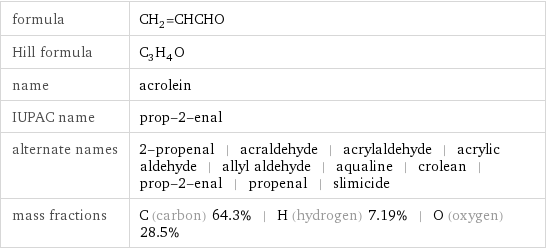
formula | CH_2=CHCHO Hill formula | C_3H_4O name | acrolein IUPAC name | prop-2-enal alternate names | 2-propenal | acraldehyde | acrylaldehyde | acrylic aldehyde | allyl aldehyde | aqualine | crolean | prop-2-enal | propenal | slimicide mass fractions | C (carbon) 64.3% | H (hydrogen) 7.19% | O (oxygen) 28.5%
Lewis structure
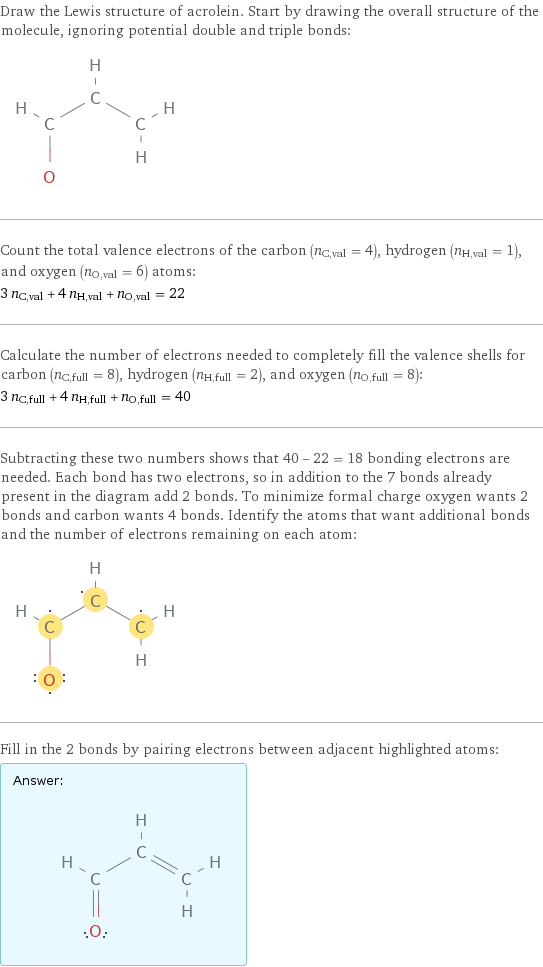
Draw the Lewis structure of acrolein. Start by drawing the overall structure of the molecule, ignoring potential double and triple bonds: Count the total valence electrons of the carbon (n_C, val = 4), hydrogen (n_H, val = 1), and oxygen (n_O, val = 6) atoms: 3 n_C, val + 4 n_H, val + n_O, val = 22 Calculate the number of electrons needed to completely fill the valence shells for carbon (n_C, full = 8), hydrogen (n_H, full = 2), and oxygen (n_O, full = 8): 3 n_C, full + 4 n_H, full + n_O, full = 40 Subtracting these two numbers shows that 40 - 22 = 18 bonding electrons are needed. Each bond has two electrons, so in addition to the 7 bonds already present in the diagram add 2 bonds. To minimize formal charge oxygen wants 2 bonds and carbon wants 4 bonds. Identify the atoms that want additional bonds and the number of electrons remaining on each atom: Fill in the 2 bonds by pairing electrons between adjacent highlighted atoms: Answer: | |
3D structure

3D structure
Basic properties
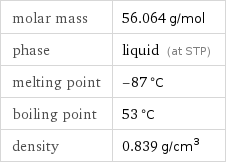
molar mass | 56.064 g/mol phase | liquid (at STP) melting point | -87 °C boiling point | 53 °C density | 0.839 g/cm^3
Units

Liquid properties (at STP)
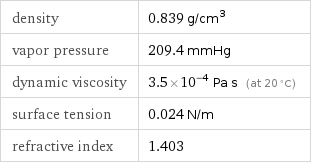
density | 0.839 g/cm^3 vapor pressure | 209.4 mmHg dynamic viscosity | 3.5×10^-4 Pa s (at 20 °C) surface tension | 0.024 N/m refractive index | 1.403
Units

Thermodynamic properties
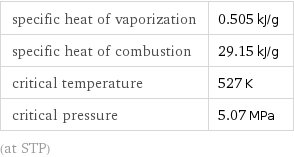
specific heat of vaporization | 0.505 kJ/g specific heat of combustion | 29.15 kJ/g critical temperature | 527 K critical pressure | 5.07 MPa (at STP)
Units

Chemical identifiers
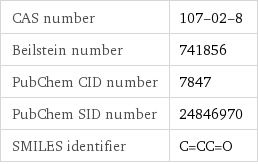
CAS number | 107-02-8 Beilstein number | 741856 PubChem CID number | 7847 PubChem SID number | 24846970 SMILES identifier | C=CC=O
NFPA label

NFPA label
Safety properties
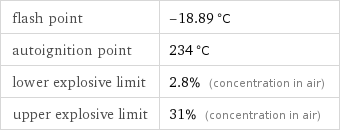
flash point | -18.89 °C autoignition point | 234 °C lower explosive limit | 2.8% (concentration in air) upper explosive limit | 31% (concentration in air)
Toxicity properties
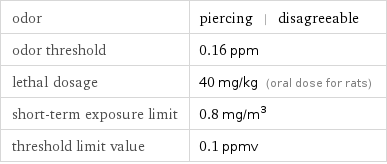
odor | piercing | disagreeable odor threshold | 0.16 ppm lethal dosage | 40 mg/kg (oral dose for rats) short-term exposure limit | 0.8 mg/m^3 threshold limit value | 0.1 ppmv
Units
